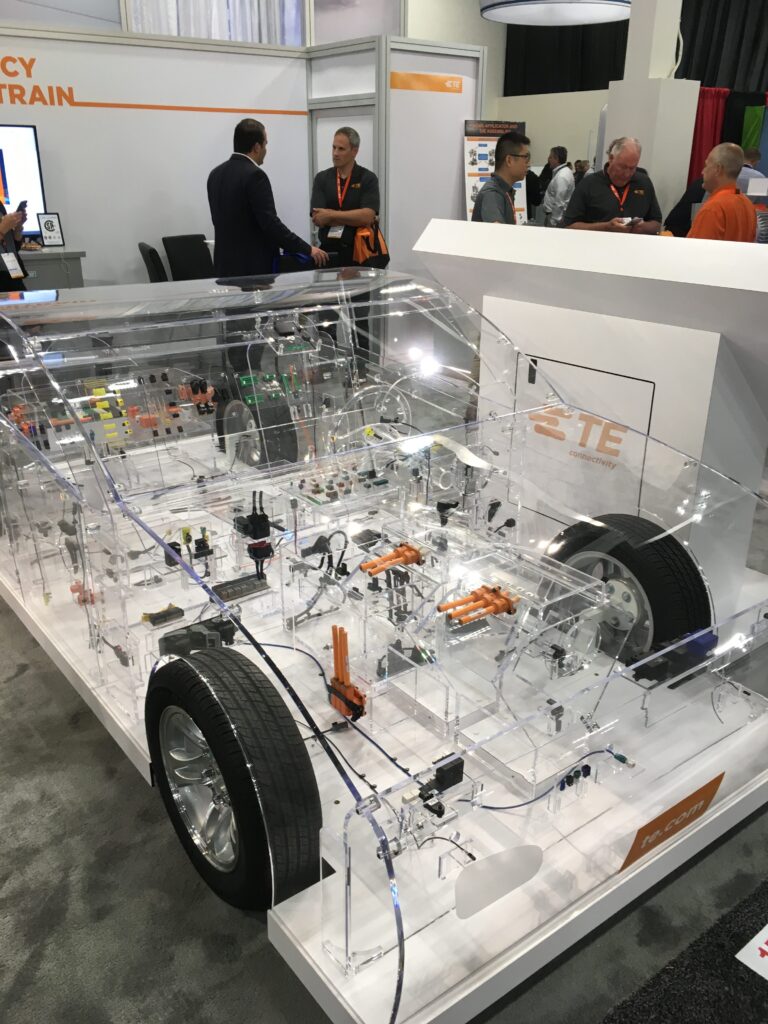Recent Trade Event Showcases Opportunities
The Battery Showrecently held in Novi, MI, showcased many opportunities for the industry in the expanding EV market, and WHN was there as an exhibitor. The shows total attendance was 5,591. There were also 2,919 total exhibitors, including many suppliers to the wire processing industry, as well as harness producers serving the EV and Critical Power industries. A powerful, end-to-end showcase, this industry event covered advanced battery, and battery interconnect technology for the automotive, portable electronics, medical technology, military, telecommunications, and utility/renewable energy industries. Following are just a few observations that will help you understand the market, and identify possible opportunities:
Plug-in Electric Vehicles (PEVs)
US sales for PEVs continue to be limited to early-adopters with only 2% market penetration. Still, forecasted sales for 2018 represent a 75% increase over last year with over 350,000 units projected in the US. The US market for these vehicles is projected to grow 14-fold by 2020. Global auto manufacturers have announced plans for over 200 PEV models between now and 2025.
The early adopters seem less prone to range anxiety, but as vehicles exceed the 200-mile range, market penetration will expand beyond the heretofore cult following, and into the general consumer ranks.
(TE Connectivity booth. EV connected technology solutions from TE.)
But all is not rosy…
Although there have been many enabling forces to EV adoption (cost, range, and availability) one hindrance to growth is the still limited public charging infrastructure. There just has not been the same investment here as with other aspects of the EV market. It is still seen as a marketing expense for OEMs like Tesla, and as a pilot programs for utilities. Overcoming this challenge will likely see the market explode (more on this later).
Battery cost reduction is slowing and could bottom out at a higher than expected level as raw material costs weaken the link between manufacturing scale and cost. In 2017, lithium ion cell costs declined by only 5% despite manufacturing scale rising by 26%.
(Mentor Graphics demonstrating Simulation Software for Electromagnetic Design)
Commercial EV Market Opportunity
Electric cars get all the media attention, but the electrification of commercial transportation is another huge market potential. Economies of usage are improving with improved range, charging technology standardization, and a decrease in battery cost for this sector. Commercial electric vehicles are also proving themselves to be service proven performers.
(TTI crew setting up for a busy day)
The electric bus market alone is projected to be a $60 B market by 2020, representing four-fold growth. China and Europe lead the charge, but as metropolitan areas push for low emission zones, the trend is expected to be emulated in the US.
Heavy duty truck OEMs are also transitioning to EV as most traditional heavy duty diesel truck manufacturers now offer some sort of battery-electric version.
(Busy day for the folks at Telsonic)
Chicken or the Egg – Opportunities with Charging Stations
As previously mentioned, the limited charging infrastructure can be a problem that prohibits growth in the EV market. Until now, EV owners have not been concerned about this issue. Their zeal for the technology has trumped the convenience and availability of public or commercial charging stations. There is currently no correlation between charging infrastructure and EV sales.
Commercial charging stations are highly unprofitable at the current utilization rate of 5%, but this is expected to change. The next 5 years should be an era of expanding margins and returns for charging infrastructure owners /operators. As charging speeds triple and the number of PEVs dramatically increases over that time frame, utilization rates should increase to 15% by 2022. If station utilization rates jump to this level, station owners should be generating an EBITDA of 40%. It seems reasonable there should be some opportunities in this end of the business.
Look for WHN in attendance at next year’s event as we continue to closely monitor these sectors. For more information on the 2019 event, go to thebatteryshow.com.
(TECH-SONIC crew ready for another busy day)



































































